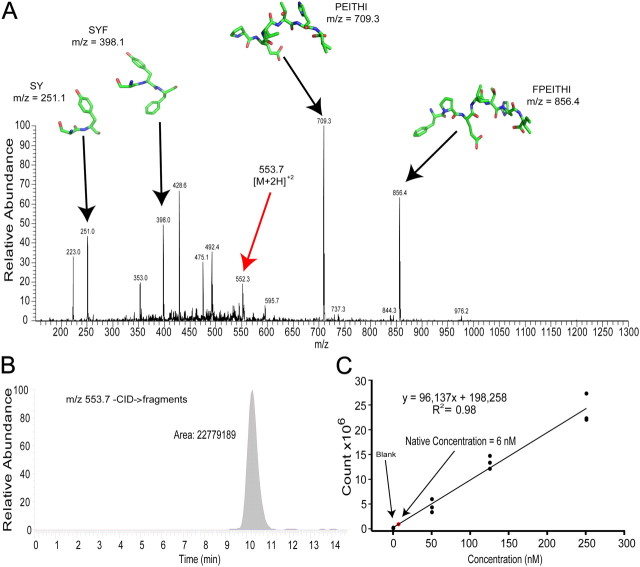Figure 3.
MHC-I peptide is present in urine at sufficient concentrations to activate sensory neurons. A, Example MS spectrum of the native peptide SYFPEITHI using electrospray injection MS/MS at the 553.7 + 2 m/z peak (red arrow). Collision energy was used to fragment the peptide into smaller pieces for identification (black arrows). B, Example chromatogram from A (250 nm), which was filtered to peptide fragment mass ranges and then integrated. C, Calibration curve created from the integration of chromatogram peaks across a range of spiked urine concentrations (0 nm, n = 3, 76,717 ± 68,574 counts; 50 nm, n = 3, 5,318,503 ± 770,200 counts; 125 nm, n = 3, 14,155,185 ± 750,388 counts; 250 nm, n = 3, 24,637,306 ± 1,716,317 counts). After performing a linear regression, the line equation was then used to calculate the average native concentration of peptide in pure urine samples (red dot).

